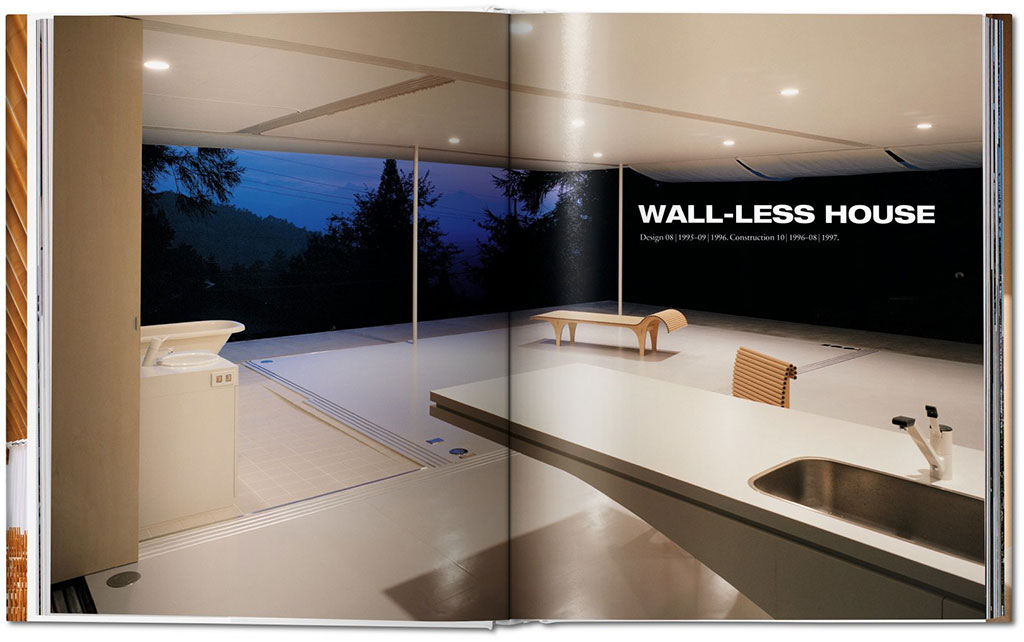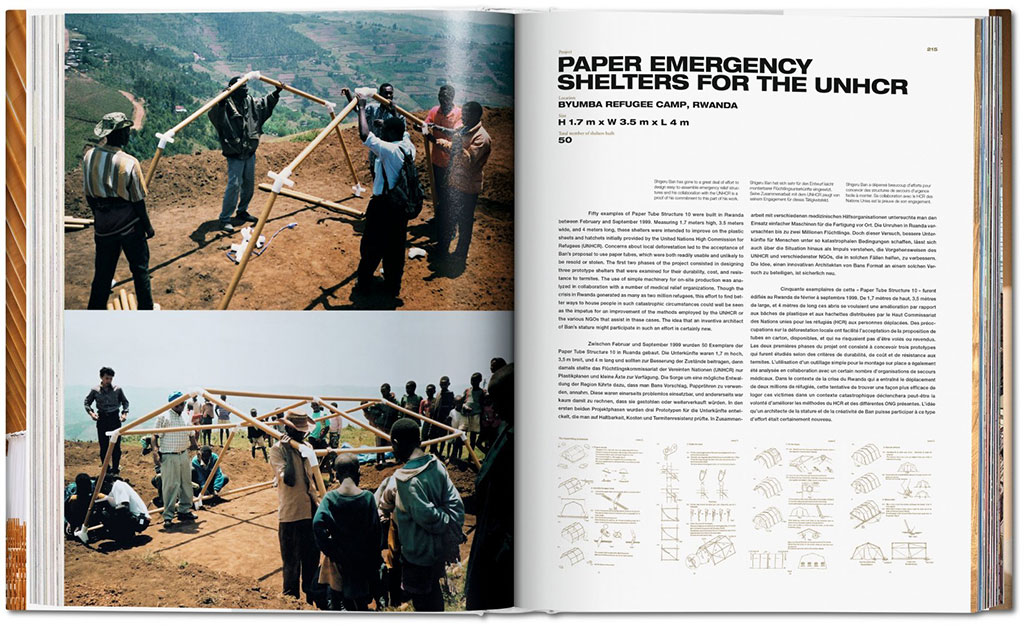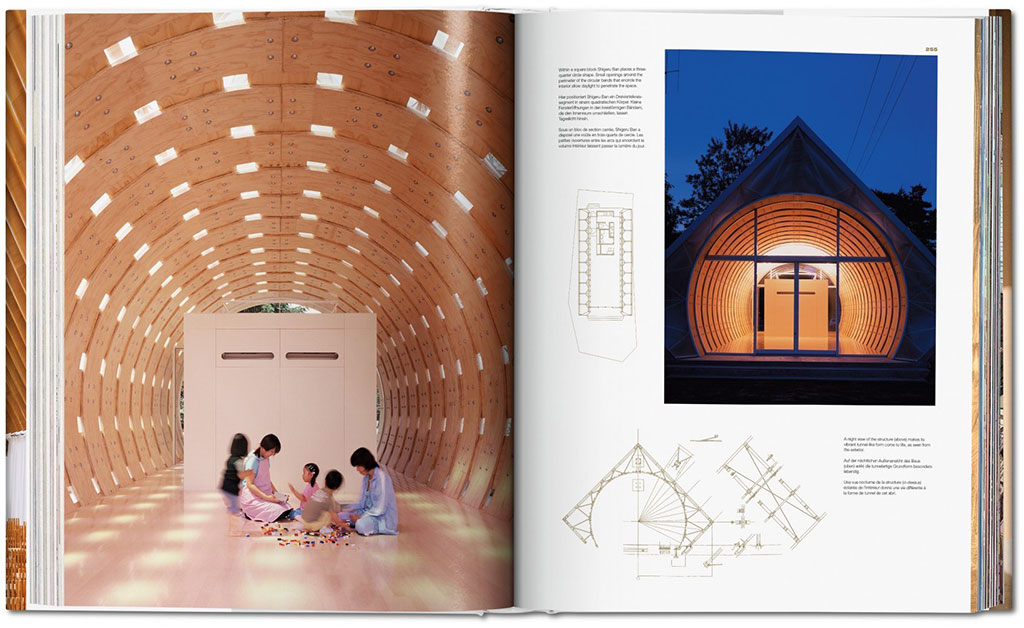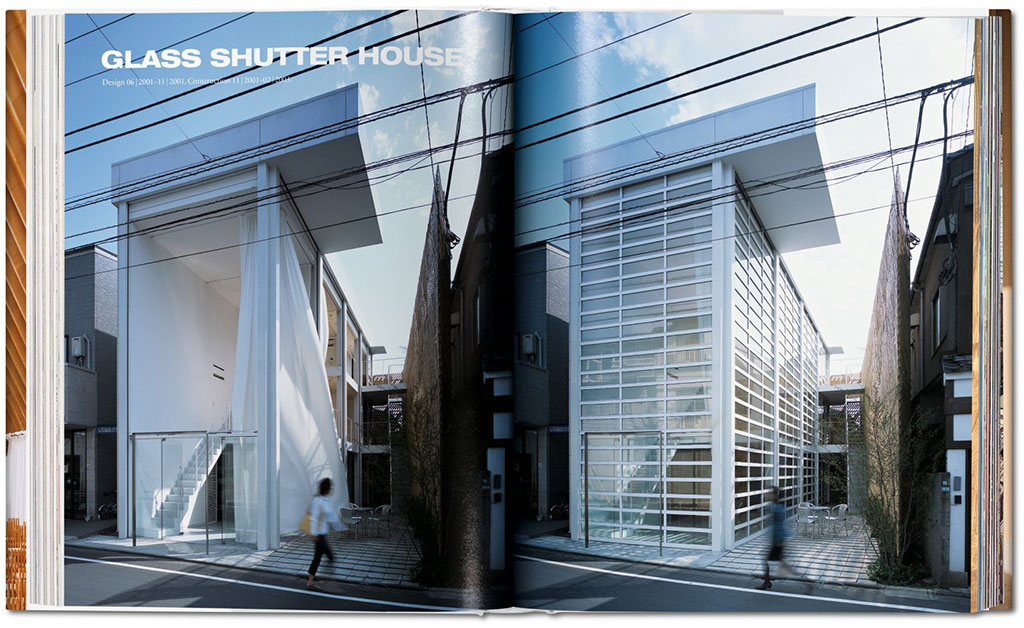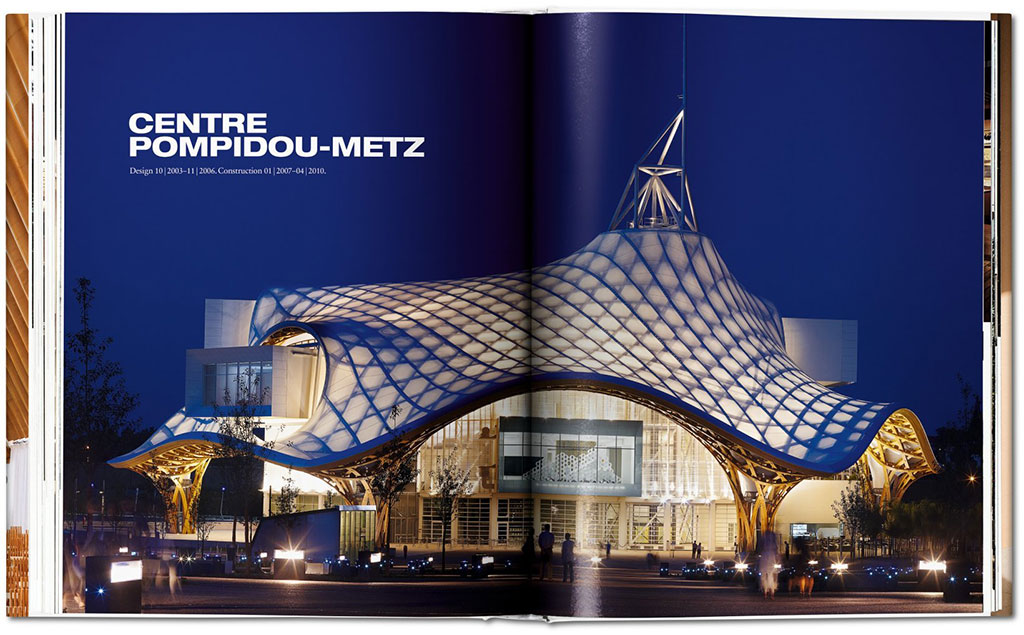BOOK:Shigeru Ban-Paper Palaces, Taschen Publications
 In the construction industry, cardboard tubes have been widely used since the 1950s as molds for concrete columns. More recently, however, they have been used as architectural structures. In the last 20 years, cardboard tubes have been attractive to architects not only because they are a low-cost, 100% recyclable and environmentally sustainable option, but also because they have the mechanical properties required to withstand structural loads. From a house without walls to exhibition spaces in shipping containers, Shigeru Ban has constantly challenged architectural rule and expectation. In the age of the “starchitect,” he has also demonstrated a commitment to humanitarian practice: Over the course of his esteemed career, his inventive, elegant designs have been applied as much to private commissions as to emergency relief work at the sites of natural and man-made disasters around the world, from Kobe to New Orleans. For the Pritzker Prize jury, which chose Ban as its 2014 winner, the architect manifests “total curiosity and commitment; endless innovation; an infallible eye; an acute sensibility.” The updated monograph “Paper PaLaces”, compiled with the architect’s collaboration, brings together every one of Ban’s built works, including over a dozen recent projects, including the Cardboard Cathedral in Christchurch and the Aspen Art Museum.-Efi Michalarou
In the construction industry, cardboard tubes have been widely used since the 1950s as molds for concrete columns. More recently, however, they have been used as architectural structures. In the last 20 years, cardboard tubes have been attractive to architects not only because they are a low-cost, 100% recyclable and environmentally sustainable option, but also because they have the mechanical properties required to withstand structural loads. From a house without walls to exhibition spaces in shipping containers, Shigeru Ban has constantly challenged architectural rule and expectation. In the age of the “starchitect,” he has also demonstrated a commitment to humanitarian practice: Over the course of his esteemed career, his inventive, elegant designs have been applied as much to private commissions as to emergency relief work at the sites of natural and man-made disasters around the world, from Kobe to New Orleans. For the Pritzker Prize jury, which chose Ban as its 2014 winner, the architect manifests “total curiosity and commitment; endless innovation; an infallible eye; an acute sensibility.” The updated monograph “Paper PaLaces”, compiled with the architect’s collaboration, brings together every one of Ban’s built works, including over a dozen recent projects, including the Cardboard Cathedral in Christchurch and the Aspen Art Museum.-Efi Michalarou

